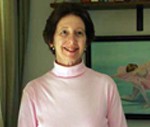By Sheila Orysiek

SAN DIEGO — Most families have some cousins they would rather not think about. Our Crowd: The Great Jewish Families of New York, by Stephen Birmingham (Syracuse University Press, 1996) and Poor Cousins by Ande Manners (Putnam Publishers Group, 1972) relate the stories of the powerful Jewish families of New York and their reactions to their “poor cousins” from Eastern Europe.
Many of these families were the descendants of the original group of twenty-three Jews, who in 1654 unexpectedly arrived at New Amsterdam, now New York City. They were Sephardic. Expelled from Spain, they had fled to Holland, and then through the years went on to Brazil which was a Dutch colony. They left Brazil when the Portuguese captured it and instituted the Inquisition.
Some decades later this nuclear group was augmented by Jews coming from Germany to America. The German immigrants tended to be from the larger cities, were educated and brought their skills and assets with them. They also practiced Reform Judaism which was not as demanding in ritual and dress as Orthodox Judaism.
With time they had become a part of the fabric at the high end of American life. Thus, they were alarmed that their cozy place in society would be forever threatened by this new wave of Jewish immigrants – their downtrodden, ghetto raised, Yiddish speaking, ragged, deeply religious, unworldly, superstitious, literate but basically uneducated “cousins” from Eastern Europe.
Oy – what would the non-Jewish high society folks think of them now? What to do? At first the well-heeled urbane German Jews tried to ignore these embarrassing newcomers but that didn’t work because there were just too many of them and they were noisy and demanding.
So, the high society German Jewish community did what they had always done: committees were formed, minutes taken, dues collected, ideas floated but little action – until someone decided that the thing to do was to disperse this motley crowd and move them out of sight away from New York City.
The idea was to turn these embarrassing cousins from the small shtetls of Eastern Europe into farmers. Groups of them were sent as far into the wilderness of the Old West across the American continent as possible or as near as the farms in New Jersey. But, they had never been farmers. So, instead of actually walking behind a horse and plow and farming, these stubborn Eastern European Jews studied farming and started agricultural colleges, researched genetics to improve strains of produce, or like Levi Strauss sold denim pants to gold miners, or opened stores in rural farm towns or worked to turn their pushcarts into shops and even huge department stores on Fifth Avenue.
But the tattered immigrants kept coming. When the problems of the crowded tenements of NYC became utterly overwhelming, the German Jews did finally – however, reluctantly – open soup kitchens, orphanages, settlement houses (remember the Settlement Cook book?) and hospitals. And, above all else, schools to educate the newcomers in English (to get rid of that pesky Yiddish), teach them American manners, and perhaps wean them from their Orthodox ways. These acts of charity weren’t always done with grace – but they were done.
Little did the proud German Jewish community imagine that the favor would be returned only a few decades later as the now established – and much larger – Eastern Europe Jewish community in America did what it could to save their cousins caught up in the noose of the Nazis.
*
Orysiek is a freelance writer who specializes in arts and literature. She may be contacted via sheila.orysiek@sdjewishworld.com Any comments below must include the writer’s first and last name and his or her city and state of residence. (City and country for those writing from outside the U.S.)